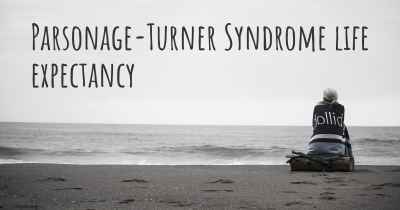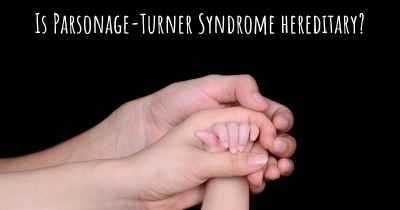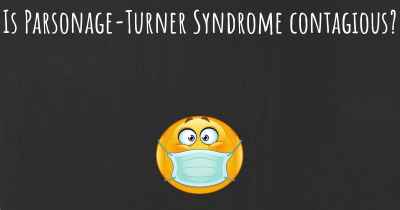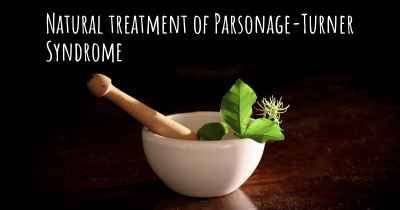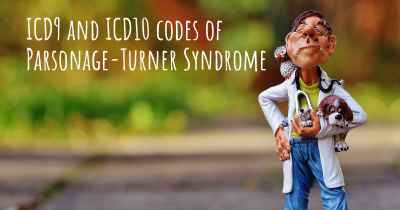Living with Parsonage-Turner Syndrome. How to live with Parsonage-Turner Syndrome?
Can you be happy living with Parsonage-Turner Syndrome? What do you have to do to be happy with Parsonage-Turner Syndrome? Living with Parsonage-Turner Syndrome can be difficult, but you have to fight to try to be happy. Have a look at things that other people have done to be happy with Parsonage-Turner Syndrome
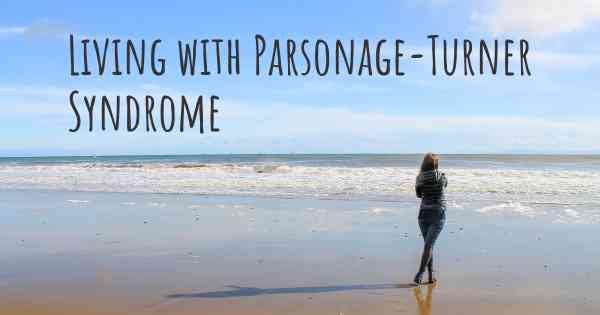
Living with Parsonage-Turner Syndrome
Parsonage-Turner Syndrome (PTS), also known as brachial neuritis, is a rare neurological condition that affects the nerves in the shoulder and upper arm. It is characterized by sudden and severe shoulder pain, followed by weakness and atrophy of the affected muscles. Living with Parsonage-Turner Syndrome can be challenging, but with proper management and support, individuals can lead fulfilling lives. Here are some strategies to help navigate life with PTS:
1. Seek Medical Attention
If you suspect you have Parsonage-Turner Syndrome, it is crucial to seek medical attention promptly. A healthcare professional can diagnose the condition through a physical examination, medical history review, and possibly additional tests such as electromyography (EMG) or nerve conduction studies. Early diagnosis and treatment can help manage symptoms and prevent further complications.
2. Understand the Condition
Take the time to educate yourself about Parsonage-Turner Syndrome. Understanding the causes, symptoms, and progression of the condition can help you better cope with its challenges. Consult reputable medical sources, connect with support groups, and discuss your concerns with healthcare professionals. Knowledge empowers you to make informed decisions about your health.
3. Develop a Support Network
Living with Parsonage-Turner Syndrome can be emotionally and physically demanding. Building a strong support network is essential. Reach out to family, friends, and support groups who can provide understanding, empathy, and practical assistance. Sharing your experiences with others who have PTS can offer valuable insights and coping strategies.
4. Manage Pain and Discomfort
Pain management is a crucial aspect of living with Parsonage-Turner Syndrome. Work closely with your healthcare team to develop a personalized pain management plan. This may include a combination of medications, physical therapy, heat or cold therapy, and relaxation techniques. It is important to communicate openly with your healthcare provider about your pain levels and any changes in symptoms.
5. Adapt Daily Activities
Adjusting your daily activities to accommodate the limitations imposed by Parsonage-Turner Syndrome can help minimize discomfort and prevent further injury. Modify your workspace to ensure ergonomic positioning, use assistive devices or adaptive equipment when necessary, and practice proper body mechanics to reduce strain on your affected shoulder and arm.
6. Engage in Physical Therapy
Physical therapy plays a vital role in managing Parsonage-Turner Syndrome. A skilled physical therapist can design a tailored exercise program to improve strength, flexibility, and range of motion in your affected shoulder and arm. Regular physical therapy sessions can help prevent muscle atrophy, reduce pain, and enhance overall function.
7. Prioritize Self-Care
Living with a chronic condition like Parsonage-Turner Syndrome requires prioritizing self-care. Take time to rest and recharge, practice stress management techniques such as meditation or deep breathing exercises, maintain a balanced diet, and get regular exercise within your limitations. Taking care of your overall well-being can positively impact your ability to cope with the challenges of PTS.
8. Communicate with Others
Openly communicate with your loved ones, friends, and colleagues about your condition. Explain the nature of Parsonage-Turner Syndrome, its impact on your daily life, and any necessary accommodations you may require. By fostering understanding and empathy, you can build stronger relationships and receive the support you need.
9. Stay Positive and Seek Emotional Support
Living with Parsonage-Turner Syndrome can be emotionally challenging. It is important to maintain a positive mindset and seek emotional support when needed. Engage in activities that bring you joy, practice mindfulness or relaxation techniques, and consider therapy or counseling to help navigate any emotional difficulties that may arise.
10. Stay Informed and Advocate for Yourself
Stay informed about the latest research, treatment options, and support resources available for Parsonage-Turner Syndrome. Advocate for yourself by actively participating in your healthcare decisions, asking questions, and seeking second opinions when necessary. By being proactive, you can ensure you receive the best possible care and support.
Living with Parsonage-Turner Syndrome may present challenges, but with the right strategies and support, you can lead a fulfilling life. Remember to consult with healthcare professionals for personalized advice and guidance tailored to your specific needs.
Posted Oct 8, 2017 by Lorene 900
Posted Apr 19, 2018 by Donna 2500
